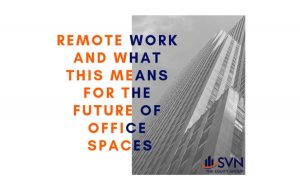
For ages an office building was a sign of a company’s success. The more grand the building, the more prestigious it’s success deemed to be. This idea is changing as businesses are changing how they occupy commercial real estate. With our ever evolving technology, millennials becoming a large element of the work space, and advances in wireless and internet communications, workers are able to communicate and access corporate networks from anywhere!
In an increasingly connected economy, companies are now spanning across more locations than ever before, thus leading to a more fluid workforce. This means that workers are able to spend less time at their home office and more time moving about the company and even better, spend time working at client based locations. Think of how people come into Las Vegas for conventions and conferences, and how many of them get work done while in town.
A more remote workforce is influencing where companies choose their locations. There is less need to have a single office where everyone comes together. Instead, companies can choose to create a space that is more convenient to where their employees live, having multiple hubs to work out of. At the same time, the demand on a team-based working environment is also changing the type of space that people need. Instead of cubicles, more and more offices are being built with team rooms that let people work together. Conference rooms and training rooms alike are becoming increasingly popular in many work offices. While still offering private spaces for their employees to make important phone calls and do uninterrupted work.
A ‘work anywhere’ culture, however isn’t practicable for every organization across the board. And remote work may only suffice temporarily, depending on growth and demand with each individual company. So if the need for a physical office space for clients or employees to appoint to is still there, choosing a location that has economic development incentives available can sweeten the deal. Companies can even choose to create multiple smaller offices around the valley to make it easy for their remote workers to check into and connect to business tools and resources when they need to.
As the nature of work changes, commercial real estate has to change along with it. New space designs will accommodate the new roles of workers in the modern business world. At the same time, new location types let companies balance serving their remote workforce all while managing commercial real estate occupancy costs.
